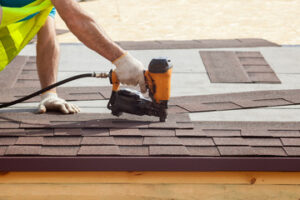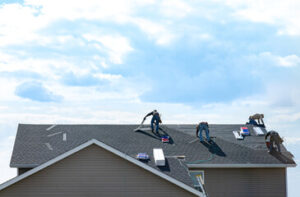Expert roofing contractors should begin each roof repair project with a thorough inspection. They should be able to identify problem areas, such as leaks or missing shingles, and make recommendations accordingly.

A faulty roof can lead to costly problems for your home. Hiring an experienced professional will ensure that the issue is dealt with quickly and correctly. Contact Roof Repair Expert LLC for professional help.
The expertise of roof repair experts plays a critical role in the quality of work and customer satisfaction. This is especially important in emergency situations, such as sudden leaks or severe storm damage. It’s also important to look for professionals who offer a wide range of services, including roof inspection, repair, and maintenance plans. A comprehensive service portfolio allows for a proactive approach to preventive care, which can save property owners money and time in the long run.
The first step in evaluating the expertise of roofing experts is checking their credentials. In addition to industry certifications, look for a valid contractor’s license and insurance. This protects the workers in case of an accident and safeguards homeowners from liability. Inquire about the number of years they have been in business, as well as their experience with various types of roofing problems.
Inexperienced roofing contractors may lack the proper tools and knowledge to complete repairs effectively. Experts use specialized tools and techniques to pinpoint the source of leaks, which can be hidden underneath insulation layers or in deteriorated flashing. They also understand the complex interaction between roofing systems and water movement patterns, which helps them find even the most elusive leaks.
When assessing the expertise of roof leak repair specialists, it’s important to consider their response time. This is especially important in emergency situations, as rapid action can prevent further damage and minimize the cost of repairs. It’s also important to look for a company that prioritizes customer satisfaction and offers solid warranties, guarantees, and transparent pricing and estimates. These features will help you select a reputable and trustworthy roofing repair company. This way, you can be confident that your roof will be repaired properly and efficiently.
Reputation
Reputation is an important consideration for homeowners seeking to hire roof leak repair experts. A good reputation is a sign of professionalism, reliability, and quality work. Homeowners can evaluate the reputation of a repair expert by reading online reviews and asking for references. In addition, a repair expert that offers strong warranties and guarantees is likely to prioritize customer satisfaction and be dedicated to providing a high-quality service. Moreover, a professional who has extensive experience in the field is more likely to have encountered a wide variety of roofing problems and developed effective solutions, making them better equipped to handle complex issues.
Certifications
Roof certifications are often required for property insurance, before a home is sold, or to satisfy mortgage and lending requirements. These professional assessments take into consideration factors like the roof’s age, design, material and maintenance history to provide an accurate assessment of its current condition. Additionally, they assess the potential for future problems and identify areas of concern.
Professionals are trained to recognize warning signs that might escape untrained observation, such as early material degradation and compromised sealing. These experts also understand how water moves through a roof system and can quickly identify the source of leaks. Regular inspections help prevent minor issues from becoming major problems and can extend a building’s roof lifespan significantly.
Roofing specialists have access to advanced tools and technology, such as moisture meters and infrared cameras, which can locate trapped moisture under the surface of the roof membrane or within insulation layers. These tools, in combination with traditional water testing methods, provide comprehensive leak detection capabilities. Additionally, a roof repair expert can patch holes and cracks caused by weather damage or foot traffic and stop water infiltration and pests from entering the building.
Warranty
Many roof repair experts offer warranties that provide additional peace of mind. These are typically offered for a period of 20-30 years, and they cover materials and workmanship. However, they may exclude damages caused by natural disasters or other unforeseen events. A solid warranty should clearly outline the terms and conditions of coverage, as well as any limitations or exclusions. It is also important to choose a contractor with a reputation for meticulous installation practices and adherence to warranty requirements.
Homeowners should prioritize roofing specialists who offer strong warranties, guarantees, and transparent pricing. These professionals will be more likely to prioritize customer satisfaction and do the job right the first time, minimizing callbacks and other expenses. They will also be more willing to address any issues that arise post-repair, ensuring that homeowners receive maximum protection and peace of mind. Additionally, these experts can provide valuable insights into navigating the complexities of insurance claims and maximizing homeowner’s insurance coverage benefits for roof-related damage. They can also recommend strategies for documenting damage, obtaining multiple repair estimates, and advocating for fair settlements.
Pricing
The cost of a roof repair depends on the extent of damage sustained and materials required to address it. For example, a minor leak in a single section of shingles may be easy to fix and require minimal labor costs, while extensive water damage or structural issues will require more complicated repair methods and additional materials. The slope of the roof also plays a role, as steeper roofs are more challenging to work on and require special safety equipment, which can increase labor costs.
